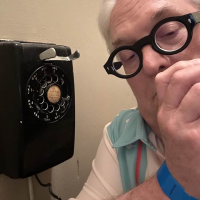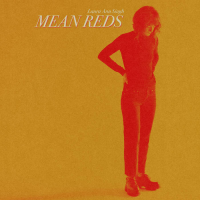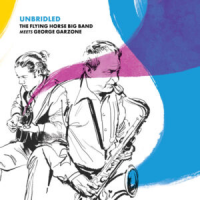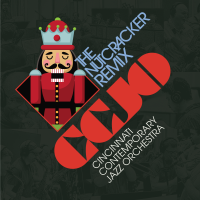Home » Jazz Articles » Album Review » Víkingur Ólafsson: Debussy • Rameau
Víkingur Ólafsson: Debussy • Rameau
As interesting and entertaining as Philip Glass -Piano Works is, it does not prepare the listener for Ólafsson's sophomore DG effort, Johann Sebastian Bach (2018). Rather than regurgitate a complete performance of The Goldberg Variations or The Well-Tempered Clavier, the pianist instead puts a great deal of careful thought and focus into programming a recital, a performance collective of Bach compositions, ordered with care and recorded in punctilious detail. The recording brought accolades to Ólafsson: 2019 Gramophone Magazine Artist of the Year; 2019 BBC Music Magazine Recording of the Year and Instrumental Album of the Year for Johann Sebastian Bach.
A new Bach recording is certainly scarcely needed. That said, Ólafsson manages an intelligent, inventive, and revealing look at the Grand Old Man. He developed his approach while woodshedding for three years in Oxford, where his wife was studying. It was here, Ólafsson claims to have found his voice in Bach, through extensive study and practice. The pianist takes full advantage of considerable lack of performance instruction in Bach's music. The composer left few dynamic, tempo markings on his scores. In this, Ólafsson found Bach's music to be pure structure, allowing him to fill in the drama and dynamics, seeking the proper balance within the music.
Shortly after the release of Johann Sebastian Bach, Ólafsson released the vinyl LP Bach Reworks, a compositional reconsideration of Bach's work through the prism of electronics and mixing. Ólafsson again taps Christian Badzura as both producer and artist and together they prove further their forward thinking from Philip Glass—Piano Works, while, at the same time, testing the durability of both Bach's music and the taste of his listeners. This is not for everyone, but it was never intended to be. Bach Reworks reveals Ólafsson as densely multidimensional and uncompromisingly creative.
So the question becomes how Ólafsson follows up such a lauded recording? Using the same intuition and inquisitive nature that gave form to Johann Sebastian Bach, the pianist searches for, and largely finds the stylistic quantum entanglement holding Jean-Philippe Rameau (1683 -1764) and Claude Debussy (1862 -1918) in similar orbits. Ólafsson began his considerations by performing all of the known piano music by the two composers. This intense study of the piano music of Rameau and Debussy allowed him to find the common language between the two, one including and transcending common nationality.
Regarding Rameau, Ólafsson only wonders why his music is not as recorded as, say, Domenico Scarlatti's keyboard sonatas, on piano. The number of harpsichord recordings are myriad, but few pianists, save for Alexander Tharaud, have addressed this music, which is more forward-thinking than either Bach or Scarlatti. There is a creative whimsy that Ólafsson captures from the Rameau pieces that echoes his similar success with his Bach. It is at this juncture of thought that Ólafsson makes the successful jump to and connection with Debussy. Debussy essentially extended Rameau's language, which, in turn, was an extension of the Couperin and Forqueray families.
Ólafsson reveals what is most gentle in Debussy, juxtaposing it with the mirthful and melancholy coexisting in the language of Rameau. Ólafsson stands to be our next Horowitz in the respect that he may never record a complete catalog of any composer as Andras Schiff and Murray Perahia have with Bach, Beethoven, and Schubert. Ólafsson is as much a creator and interpreter, conjuring thoughtful and challenging programs that will delight and entertain on multiple levels. He is presently at work on his fourth DG release. Wonder what it will be?
Track Listing
Claude Debussy (1862 - 1918): La damoiselle élue, L. 62: Prélude; Jean-Philippe Rameau (1683 - 1764): Le Rappel des oiseaux, Rigaudon 2, Musette en rondeau, Tambourin, La Villageoise, Gigue en rondeau 2; Debussy: Estampes, L. 100, 3. Jardins sous la pluie; Children's Corner, L. 113, 3. Serenade for the Doll, 4. The Snow Is Dancing; Rameau: Les tendres plaints, Les tourbillons, L'entretien des Muses; Debussy: Préludes / Book 1, L. 117, 6. Des pas sur la neige; Rameau: La joyeuse, Les Cyclopes; Víkingur Ólafsson / Rameau: The Arts and the Hours; Debussy: Préludes / Book 1, L. 117, 8. La fille aux cheveux de lin; Préludes / Book 2, L. 123, 8. Ondine; Rameau: Pièces de clavecin en concerts, Cinquième concert, 2. La Cupis, in D minor, Quatrième concert, 2. L'indiscrète, in B flat major, 3. La Rameau, in B flat major, La Poule, L’Enharmonique, Menuet 2, Les Sauvages, L’Égyptienne; Debussy: Images - Book 1, L. 110, 2. Hommage à Rameau.
Personnel
Víkingur Ólafsson
pianoAlbum information
Title: Debussy • Rameau | Year Released: 2020 | Record Label: Deutsche Grammophon
Tags
PREVIOUS / NEXT
Support All About Jazz
 All About Jazz has been a pillar of jazz since 1995, championing it as an art form and, more importantly, supporting the musicians who make it. Our enduring commitment has made "AAJ" one of the most culturally important websites of its kind, read by hundreds of thousands of fans, musicians and industry figures every month.
All About Jazz has been a pillar of jazz since 1995, championing it as an art form and, more importantly, supporting the musicians who make it. Our enduring commitment has made "AAJ" one of the most culturally important websites of its kind, read by hundreds of thousands of fans, musicians and industry figures every month.

























